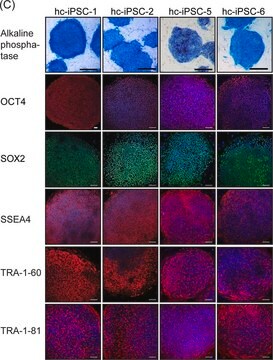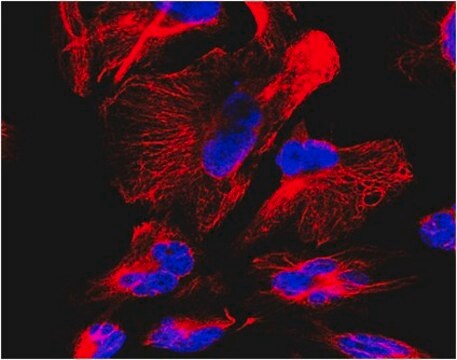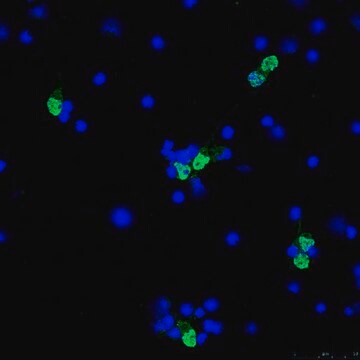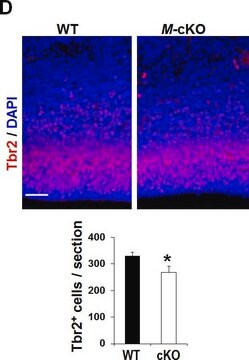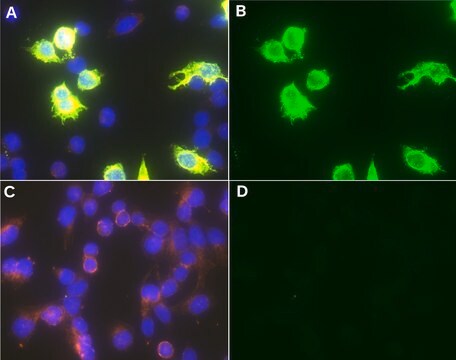FCABS352A4
Milli-Mark® Anti-Nanog-Alexa Fluor 488 Antibody, NT
Milli-Mark®, from rabbit
Sinonimo/i:
Homeobox transcription factor Nanog, Nanog homeobox
About This Item
Prodotti consigliati
Origine biologica
rabbit
Livello qualitativo
Coniugato
ALEXA FLUOR™ 488
Forma dell’anticorpo
affinity isolated antibody
Tipo di anticorpo
primary antibodies
Clone
polyclonal
Reattività contro le specie
human
Reattività contro le specie (prevista in base all’omologia)
mouse (based on 100% sequence homology), rat (based on 100% sequence homology)
Produttore/marchio commerciale
Milli-Mark®
tecniche
flow cytometry: suitable
Isotipo
IgG
N° accesso NCBI
N° accesso UniProt
Condizioni di spedizione
wet ice
modifica post-traduzionali bersaglio
unmodified
Informazioni sul gene
human ... NANOG(79923)
Descrizione generale
NANOG may be useful in the immunohistochemical diagnosis of tumors. NANOG is expressed in germ cells of the fetus and in some germ cell tumors of the gonads and central nervous system (CNS).
Specificità
Immunogeno
Applicazioni
Stem Cell Research
Pluripotent & Early Differentiation
Qualità
Descrizione del bersaglio
Stato fisico
Stoccaggio e stabilità
Risultati analitici
2102 Ep cells
Note legali
Esclusione di responsabilità
Non trovi il prodotto giusto?
Prova il nostro Motore di ricerca dei prodotti.
Codice della classe di stoccaggio
12 - Non Combustible Liquids
Classe di pericolosità dell'acqua (WGK)
WGK 2
Punto d’infiammabilità (°F)
Not applicable
Punto d’infiammabilità (°C)
Not applicable
Certificati d'analisi (COA)
Cerca il Certificati d'analisi (COA) digitando il numero di lotto/batch corrispondente. I numeri di lotto o di batch sono stampati sull'etichetta dei prodotti dopo la parola ‘Lotto’ o ‘Batch’.
Possiedi già questo prodotto?
I documenti relativi ai prodotti acquistati recentemente sono disponibili nell’Archivio dei documenti.
Il team dei nostri ricercatori vanta grande esperienza in tutte le aree della ricerca quali Life Science, scienza dei materiali, sintesi chimica, cromatografia, discipline analitiche, ecc..
Contatta l'Assistenza Tecnica.